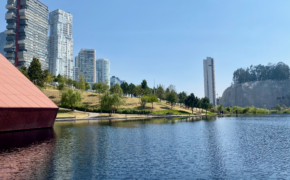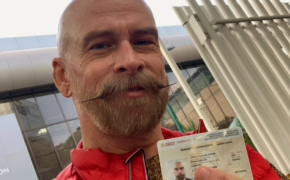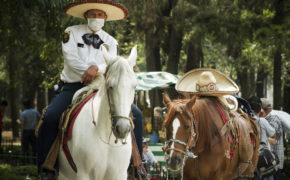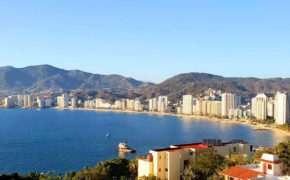¡Vamos México!
In 30 days, I’m moving to Mexico. I’m pretty excited about it! This article is an introduction to a new chapter I’m beginning in a new country, and this site is where I will chronicle my experiences. I’ll write about my experiences as I make my way to parts of Mexico I have not yet discovered. I’ll teach you all about the life hacks for living in Mexico, from trash day shenanigans to water heater headaches and more. I’ll be diving head-first into Mexico’s many cultures, perfecting my Spanish, learning the correct use of güey, indulging in culinary delights, and experience indigenous spiritual practices which have resonated powerfully for me during my visits to Mexico.
It was back in my childhood that I first started to romance Mexico, partly inspired by my mother’s family roots in Point Hueneme, California. It was there she met my dad who was stationed nearby at Point Mugu during the Vietnam War. Her father was also a Navy man, and a big history buff. Two things my grandfather was always enthused about were tall ships and the California Missions. He used to make wood etchings of the missions and tell me stories about California when he and my grandmother were able to visit us where I grew up near Kansas City. I loved his stories and the beautiful architecture of the missions. I revisited the California Missions as an interactive project while earning my degree in Art at San Diego State University. (Go Aztecs! – Ironic, right?!) Over the course of my life, the story of the missions became entwined with my own family history, as my grandfather, grandmother, and brother are buried in the cemetery at Mission San Luis Rey in Oceanside, California.

Mission San Luis Rey
I learned from my grandfather that California has a long and interesting history. The area was first populated by indigenous tribes for at least 10,000 years and is part of Aztlán, the ancestral homeland of the Aztecs, which includes a large area of the US southwest. In the tragic aftermath of the Spanish Conquest of Tenochtitlán in 1521, New Spain was colonized by the 12 Apostles of Mexico, sent by the Catholic Church to evangelize the native populations of Mexico. Wherever the 12 Apostles went, the Spanish Army followed soon behind. In 1769, it was formally named Alta California, a province of New Spain. An expedition was sent north from Querétaro up the peninsula of Baja California, including Fr. Junipero Serra, the founder of the California Missions. It became part of Mexico on September 16, 1821, the day Mexico won its independence from Spain. Following the Bear Flag revolt in 1846, Alta California briefly became the California Republic. Its bear flag remains an enduring symbol of California to this day, though its independence was short-lived when the fledgling republic was invaded by the United States at the onset of the Mexico-American war the same year. After the war, Alta California was ceded to the United States in 1848. Eastern parts of the territory became all or parts of the states of Nevada, Arizona, and Utah. The western side became the state of California on September 9, 1850, the thirty-first admitted to the Union. So, really, it’s not so much that I’m moving to Mexico, as much as acknowledging that I’ve lived on historic Mexican soil since 1985 when my family moved to San Diego from Kansas City. Enough history for today? Okay, fine, let’s move on.
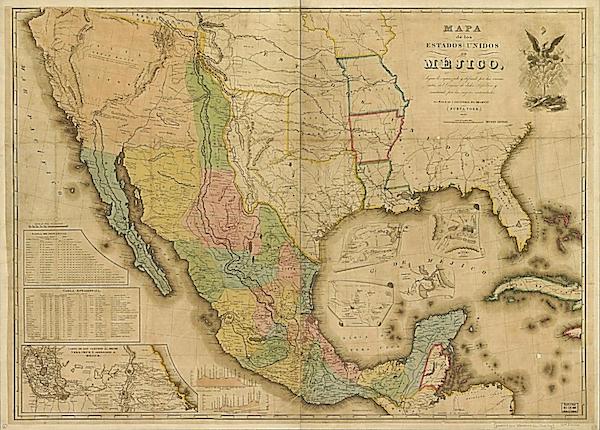
Mapa de Mejico
I started learning Spanish in 7th grade when the Catholic school I went to in Blue Springs, Missouri started offering Spanish as an elective taught by Sister Hildegard. She had a thick German accent, but her introduction to the language planted a seed that has grown with me throughout my life. I continued learning the language in high school, where Spanish was my favorite subject, second only to theater! After moving with my family to San Diego in 1985, I got plenty of opportunities to practice Spanish during visits to nearby Tijuana. We would sometimes venture further south into Baja California, heading to Puerto Nuevo for lobster or Ensenada for the beautiful coast-side drive. My ex-wife and I honeymooned in Loreto, Baja California Sur. It was during these years that I learned to understand and appreciate the similarities and differences between California and Baja California, and the strangeness of a border separating one from the other.
After I moved to San Francisco in 1993, I did not get to visit Mexico again until I went to Tulúm for two weeks in April and May of 2010. It was a magical trip I wrote all about in my post, Paradise Found! At SDSU, my degree program required a year of upper-division art history, so I focused on the art of Mexico and Latin America, before and after the Conquest. It was so exciting on that trip to be able to visit Maya ruins at Tulúm, Cobá, and Chichén Itzá. I enjoyed the beaches, cenotes, jungles, and the tropical weather. I was changed forever by a profound experience during a temazcal. I returned to my life in San Francisco certain that Mexico had more to show me still.

El Castillo at Chichén Itzá
The trip to Tulúm reminded me how much I loved Mexico, so I decided to see if there were other clothing-optional beaches in Mexico. It was then that I started reading about a place called Zipolite on the coast of Oaxaca state. By all descriptions, it probably wasn’t my kind of place. Zipolite was unpopulated in modern times before the 1950s, when a single family moved to the area, accessible only by a dirt trail from nearby San Pedro Pochutla. By the 1960s, it was a secret spot frequented mostly by hippies, attracted to the area for its tropical coastal climate which made wearing clothes unnecessary. And so it was that Mexico’s first nude beach was established, a status that finally become officially legal in 2016. Today it is the site of the annual Festival Nudista Zipolite.
I decided that it wouldn’t hurt to go check it out and booked my first trip for my 48th birthday in 2015. That first trip was just a week, but it was one of the best weeks of my life. The people in Zipolite are so warm and friendly. The food is delicious, with fresh fruit and seafood making up the bulk of what I eat when I visit. There is also great Italian food here thanks to a wave of Italian immigrants who brought their best family recipes with them from Italy. So you’ll enjoy fresh pastas, tangy sauces, and the best Italian pizza this side of Naples. I especially enjoy fresh Italian pastries, which are sold by vendors along the beach each morning.
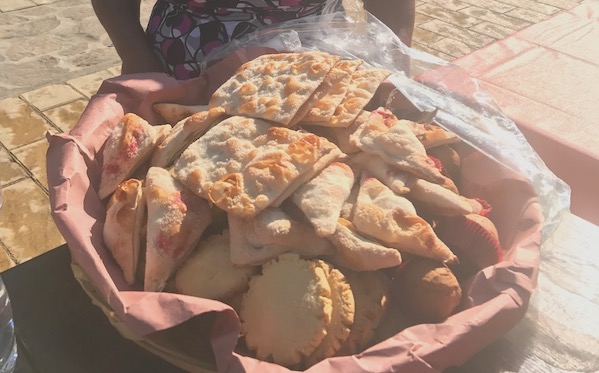
Italian pastries for sale on the beach in Zipolite, Oaxaca
The beach is about 2 km long, and pretty wide all the way down. Nudity is permitted along the entire beach, with a relaxed and friendly vibe. Several of the hotels are clothing-optional, including Heven and Hotel Nude, which both have swimming pools, a rare amenity there due to limited water resources. At the east end of the beach is Playa del Amor, a beautiful spot to take in the sunsets. For sunrises, check out Playita, in a small cove adjacent to Shambala at the west end of the beach. If you decide to get some lunch or a cocktail at one of the resorts or need to go shopping in the pueblo, you’ll need to wear appropriate beach attire, so make sure to bring a small tote to hold your shorts, shirt, and a few pesos when you head out for that long afternoon stroll on the beach, and you’re set.
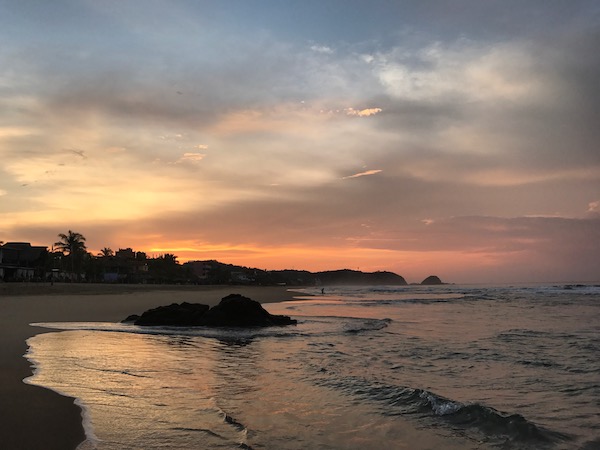
Zipolite sunrise
As it turns out, the coast of Oaxaca is truly a magical place. Nearby Mazunte is a Pueblo Mágico, a designation given to several unique Mexican towns known for their “natural beauty, cultural richness, traditions, folklore, historical relevance, cuisine, art crafts and great hospitality”, according to Wikipedia. There you can visit the National Sea Turtle Museum, or spend some time meditating at beautiful Punta Cometa, a high point on the cliffs overlooking the Pacific, where the reflection of the setting sun resembles a comet toward sunset.
I am making a career change as I move. I will be teaching English as a foreign language to Mexican professionals, and others online. After a few weeks of reset time at the beach, I’ll head over to Guadalajara for four weeks of instruction at International Teacher Training Organization to become a TOEFL-certified instructor. After taking the course, I am guaranteed job placement. I just need to provide a short list of cities, and so far my list is topped by the cities of Oaxaca and Querétaro. I will have plenty of time in Guadalajara to consider adding it to the list and will make a few weekend trips to scout out a few more locations. There are some real leaps of faith in this process, including a brief departure from Mexico to apply for a temporary resident visa at a Mexican consulate outside of the country. I’ve checked this all out pretty good, and feel pretty confident about the process. I’m not a fool, so I’ve also done my homework and have a backup plan.
That’s it for now. I’ll make another post or two as I prepare for my departure, but the real fun starts August 1. ¡Nos vemos!



